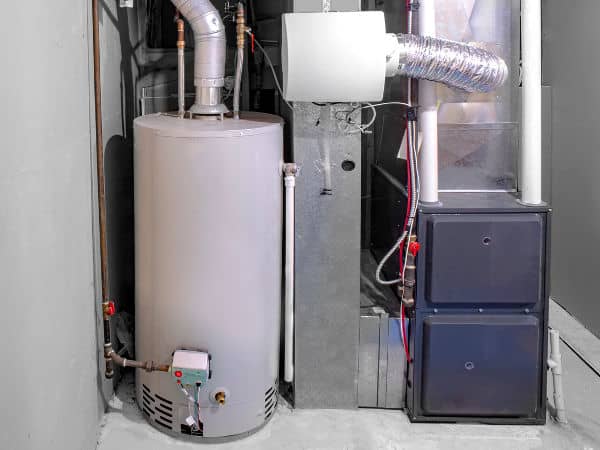Best Practices for Maintaining Your Home's Hot Water SystemBest Practices for Caring for Your Home's Hot Water System
Best Practices for Maintaining Your Home's Hot Water SystemBest Practices for Caring for Your Home's Hot Water System
Blog Article
The content which follows pertaining to Water Heater Maintenance Tips You Can't Afford to Forget is quite engaging. Don't miss it.

Hot water is important for day-to-day comfort, whether it's for a revitalizing shower or washing dishes. To guarantee your hot water system runs efficiently and lasts much longer, regular maintenance is key. This write-up provides functional ideas and insights on exactly how to keep your home's hot water system to prevent disruptions and expensive repairs.
Introduction
Keeping your home's hot water system could seem overwhelming, but with a couple of basic steps, you can guarantee it runs efficiently for many years ahead. This overview covers everything from recognizing your warm water system to DIY upkeep tips and understanding when to call in professional aid.
Significance of Keeping Your Warm Water System
Regular upkeep not just extends the life expectancy of your warm water system but likewise guarantees it runs efficiently. Disregarding upkeep can lead to reduced performance, higher energy expenses, and also premature failure of the system.
Indicators Your Warm Water System Needs Maintenance
Recognizing when your hot water system needs interest can protect against significant issues. Look out for signs such as inconsistent water temperature level, strange sounds from the heater, or corroded water.
Understanding Your Hot Water System
Prior to diving right into upkeep tasks, it's useful to comprehend the standard parts of your hot water system. Generally, this consists of the hot water heater itself, pipes, anode poles, and temperature level controls.
Month-to-month Upkeep Tasks
Normal month-to-month checks can help catch minor issues before they intensify.
Flushing the Water Heater
Flushing your water heater removes sediment build-up, improving effectiveness and prolonging its life.
Checking and Replacing Anode Rods
Anode rods avoid corrosion inside the storage tank. Examining and replacing them when worn out is essential.
Inspecting and Readjusting Temperature Level Setups
Readjusting the temperature level settings makes sure optimum efficiency and security.
Do It Yourself Tips for Maintenance
You can carry out a number of maintenance tasks yourself to keep your warm water system in leading problem.
Looking for Leakages
On a regular basis check pipes and links for leakages, as these can cause water damage and higher bills.
Testing Stress Alleviation Valves
Checking the stress relief valve ensures it functions appropriately and prevents excessive stress build-up.
Shielding Pipelines
Insulating warm water pipelines minimizes warm loss and can save energy.
When to Call an Expert
While do it yourself maintenance is useful, some issues call for expert knowledge.
Complex Concerns Calling For Expert Help
Examples include significant leaks, electric issues, or if your water heater is consistently underperforming.
Regular Expert Maintenance Conveniences
Expert maintenance can consist of extensive evaluations, tune-ups, and making certain compliance with safety criteria.
Conclusion
Normal maintenance of your home's warm water system is vital for efficiency, long life, and expense financial savings. By complying with these tips and understanding when to seek expert help, you can make certain a reputable supply of hot water without unforeseen interruptions.
How to Maintain an Instant Hot Water Heater
Before tinkering with your hot water heater, make sure that it’s not powered on. You also have to turn off the main circuit breaker and shut off the main gas line to prevent accidents. Also turn off the water valves connected to your unit to prevent water from flowing into and out of the appliance. 2. When you’re done, you have to detach the purge valves’ caps. These look like the letter “T” and are situated on either side of the water valves. Doing so will release any pressure that has accumulated inside the valves while at the same time avoid hot water from shooting out and burning your skin. 3. When the purge valves’ caps are removed, you have to connect your hosing lines to the valves. Your unit should have come with three hoses but if it didn’t, you can purchase these things from any hardware or home repair shops. You can also get them from retail stores that sell water heating systems. Read the user’s manual and follow it to complete this task properly. When the hosing lines are connected, open the purge port’s valves. 4. You should never use harsh chemical cleaners or solutions when cleaning your unit. Make use of white vinegar instead. It should be undiluted and you’ll probably use about 2 gallons. 5. Now flush your water heater. This task should probably take about 40 minutes. We can’t give you specific directions for this because the procedure is carried out depending on the type, model and brand of your heater. With that being said, refer to the user’s manual. 6. When you’re done draining the unit, you have to turn off the purge port valves again. Remove the hosing lines that you earlier installed on each of the water valves. Put the valve caps (purge port) back in their respective places and be very careful so as not to damage the rubber discs that are found inside these caps. 7. Now that everything’s back in place, check your user’s manual again to find out how to reactivate your water heating system. 8. Once it is working, turn one of your hot water faucets on just to let air pass through the heater’s water supply pipes. Leave the tap on until water flows smoothly out of it. https://www.orrplumbing.com/blog/2014/september/how-to-maintain-an-instant-hot-water-heater/

We had been introduced to that editorial about Water Heater Maintenance Tips You Can't Afford to Forget from an acquaintance on our other domain. Sharing is caring. Helping people is fun. We love your readership.
Click Here Report this page